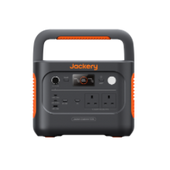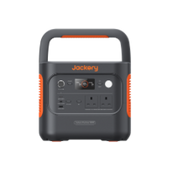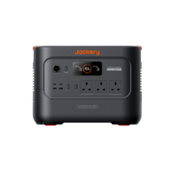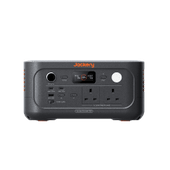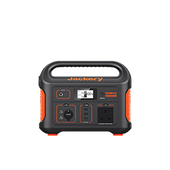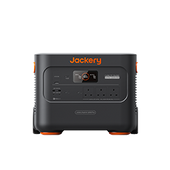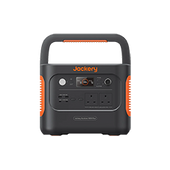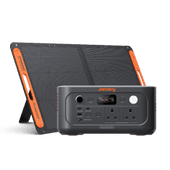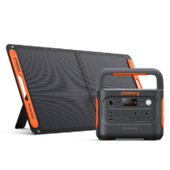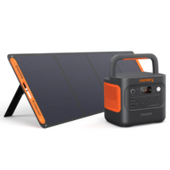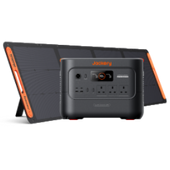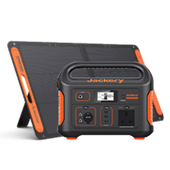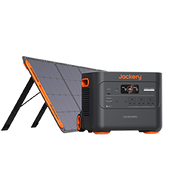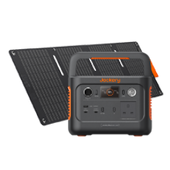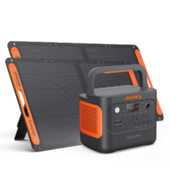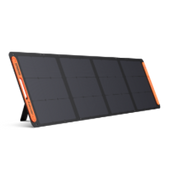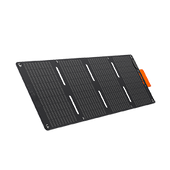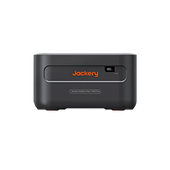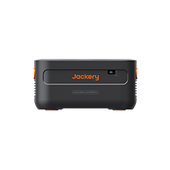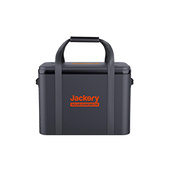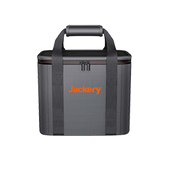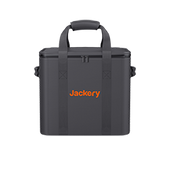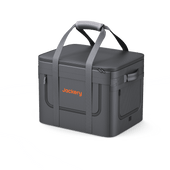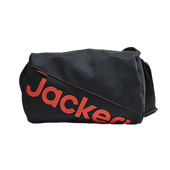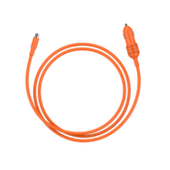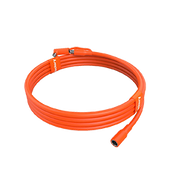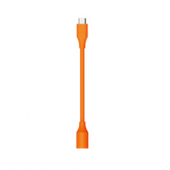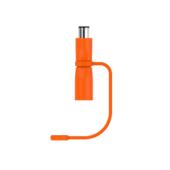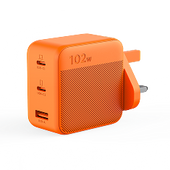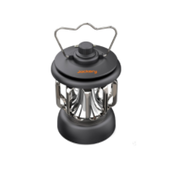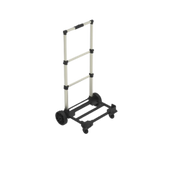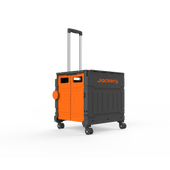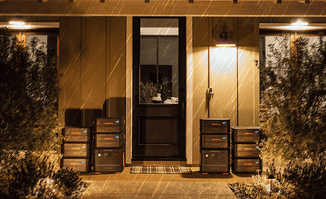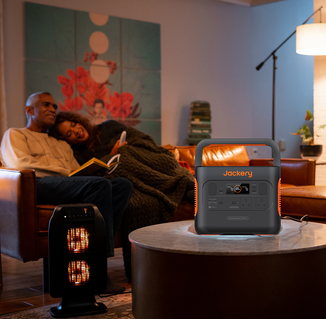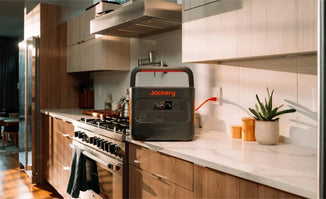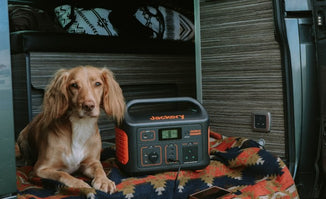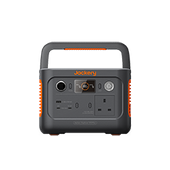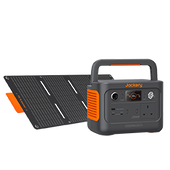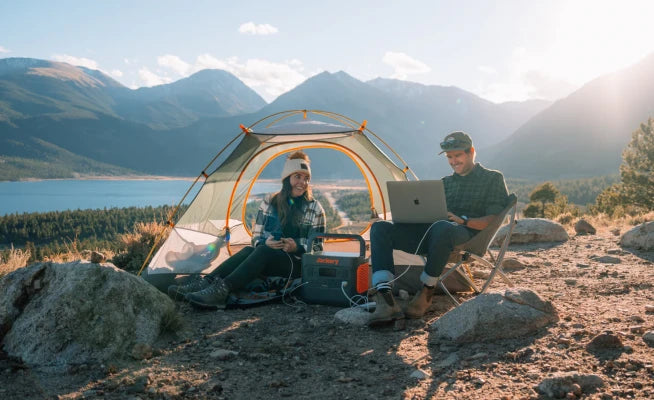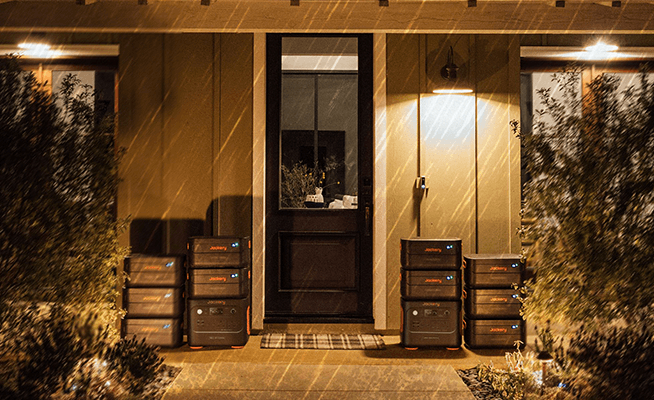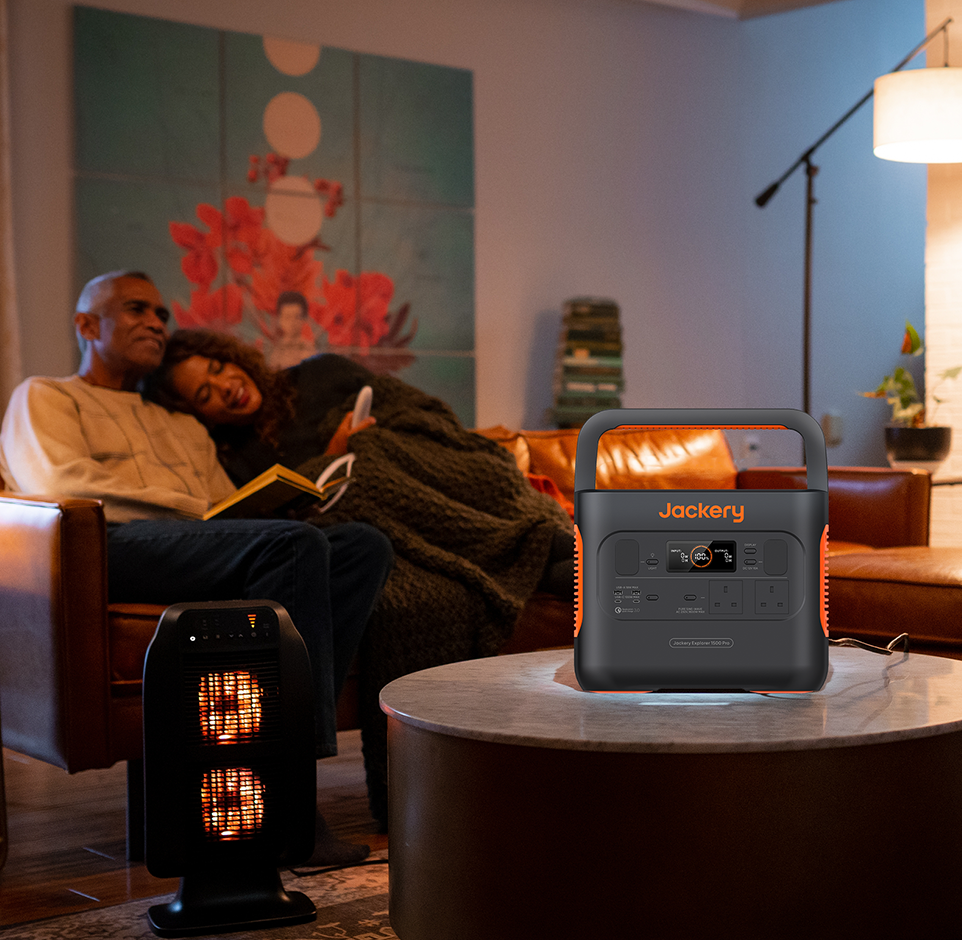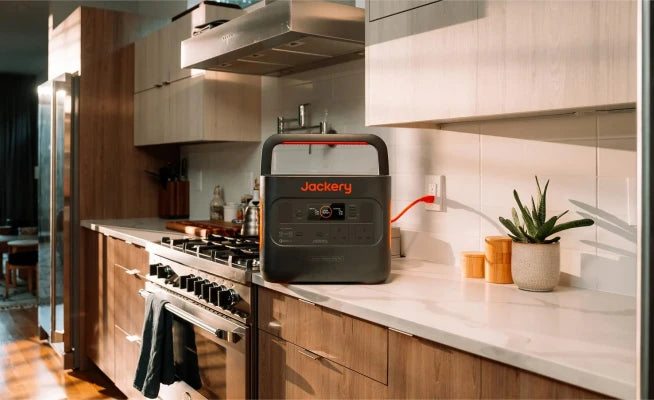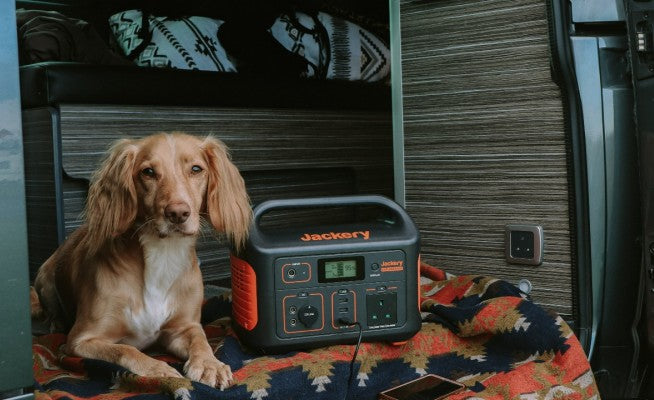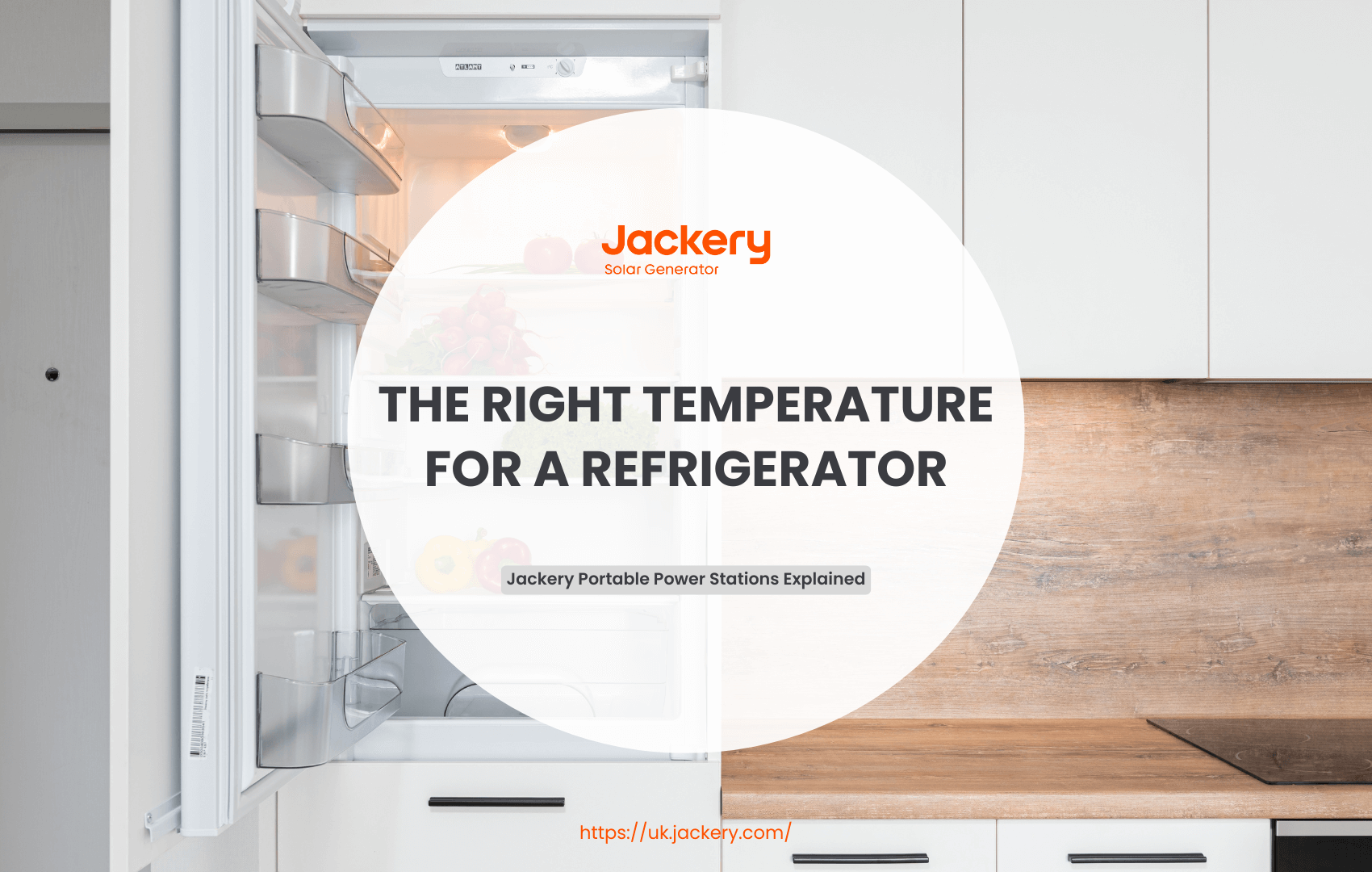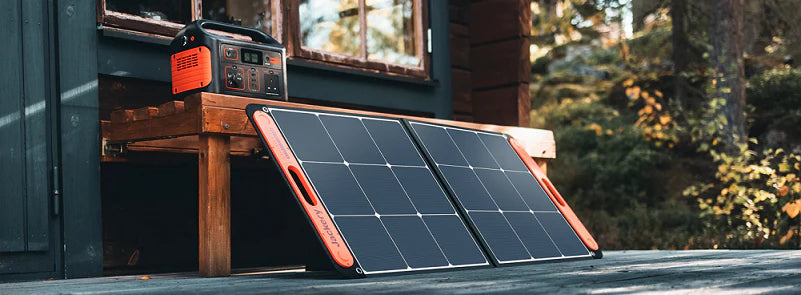As the UK gradually transitions to low-carbon heating solutions and phases out fossil fuels, it's no surprise that air-source heat pumps are rapidly becoming a top choice for homeowners and renovators. Compared to gas boilers, air-source heat pumps are three times more efficient and produce two to three times less annual CO2 emissions.
If you're still unsure whether to purchase and install an air-source heat pump, read the following carefully to decide. It includes information on how air-source heat pumps work, their types, power consumption, operating costs, the purchase and installation process, and whether they're worth it.
|
Key Takeaways: |
|
What Is an Air Source Heat Pump?
The air-source heat pump is one of the newest, low-carbon heating options, quickly overtaking conventional gas or oil boilers. Even in temperatures as low as -15°C, it uses the heat from the outside air to heat and provide hot water for your house. Air-source heat pumps emit two to three times less CO2 annually and are three times more efficient than gas boilers.
How Do Air-Source Heat Pumps Work?
An air-source heat pump uses the same technology that keeps your refrigerator or freezer cool, but in reverse. While a fridge absorbs heat from inside and releases it to the kitchen, a heat pump does the opposite—it absorbs heat from the outside air and pushes it indoors. This heat can then be used for radiators, floor heating, or to generate hot water. Here's a breakdown of how an air-source heat pump works:
Heat Extraction: An air-source heat pump absorbs heat from the outside air into a cold, liquid refrigerant.
Compression: The pump uses electricity to compress the refrigerant, significantly increasing its temperature.
Heat Exchange: The now-hot refrigerant passes through a heat exchanger, changing from liquid to gas, transferring the heat to your heating and hot water systems.
The Cycle Resets: Once the heat is transferred, the refrigerant cools, returning to its liquid state, and the process begins again.
What Types of Air Source Heat Pumps Are There?
Based on the heat transfer medium, air source heat pumps can be divided into two main types: air-to-air and air-to-water heat pumps.
Air-to-Air Heat Pumps
Air-to-air heat pumps deliver heated or cooled air to your home through a fan system. These are commonly called air conditioners and can switch between heating and cooling depending on the season. Their core components include an evaporator, compressor, condenser, and expansion valve, forming a closed-loop circulation system. These systems cannot produce hot water, so a separate immersion heater or other water heating system is required.
Air-to-air heat pumps are commonly used in the following scenarios:
Systems for Air Conditioning in Homes: Multi-split and split-type air conditioners satisfy winter heating and summer cooling requirements.
Small Business Spaces: Shops, offices, and other settings needing temperature control.
Temporary Heating: Short-term, prefabricated structures and temporary buildings.
No Need for Floor Heating: Only air conditioning; no floor heating or hot water for the house.

Air-to-Water Heat Pumps
Through a water circulation system, air-to-water heat pumps provide hot water or heating by transferring heat from the air to a water medium. An evaporator, compressor, water circulation system (plate heat exchanger, water pump, water tank), and indoor terminals (fan coil units, floor heating, etc.) are among its essential parts. This heat pump can directly replace your gas or oil boiler.
Air-to-water heat pumps are commonly used in the following scenarios:
Home Heating Systems: Floor and radiator heating provide a comfortable, constant temperature environment.
Commercial and Public Buildings: Hotels, hospitals, schools, and other places requiring stable heating and hot water.
Hot Water Supply: Swimming pool heating, factory hot water needs, etc.
|
Feature |
Air-to-Air Heat Pump |
Air-to-Water Heat Pump |
|
Heat Output Type |
Hot Air |
Hot Water (Floor Heating/Radiator/Domestic Hot Water) |
|
Installation Complexity |
Low (No Water Pipes) |
High (Requires Water Pipeline System) |
|
Comfort |
Low (Hot Air Drying) |
High (Water Heating Gentle) |
|
Applicable Terminals |
Air Conditioner Indoor Units |
Floor Heating, Fan Coil Units, Radiators |
|
Low-Temperature Performance |
Poor (Relies on Electric Auxiliary Heat) |
Good (Inverter Models Support Low-Temperature Operation) |
|
Cost |
Low |
High |
How Much Electricity Does an Air Source Heat Pump Use?
Air-source heat pumps are designed to be very energy-efficient. On average, they consume approximately 8-15 kWh of electricity daily. However, a range of external factors can affect their power consumption.
Therefore, it isn't easy to understand its specific power consumption without seeing the unit in real-world use. Based on a daily power consumption of 8-15 kWh, an air-source heat pump would consume between 240 and 450 kWh per month for a typical residential environment. This is an average across the months of the year, but power consumption can be higher in winter and lower in summer.

Power Consumption of Air-Source Heat Pumps of Different Sizes
The standard range of sizes and output capacities for air-source heat pumps is between 9,000 BTU (0.75 tonnes) and 90,000 BTU (7.5 tonnes). For instance, to heat a 300-square-foot (27.87-square-metre) area for one hour, a 9,000 BTU (1 tonne) air-source heat pump typically needs 2.6 kWh of power.
Based on the capacity of your air source heat pump, you can estimate its electricity usage by selecting the appropriate kWh from the table below and multiplying it by the number of operating hours. The following table lists typical electricity usage for standard air source heat pump sizes:
|
Air Source Heat Pump Size |
Heated Area / Space* |
Electricity Usage |
|
9,000 BTU (0.75 Tons) |
300 Sq ft (27.87 sq m) |
2.6 kWh |
|
12,000 BTU (1 Tons) |
400 Sq ft (37.16 sq m) |
3.5 kWh |
|
15,000 BTU (1.25 Tons) |
500 Sq ft (46.45 sq m) |
4.4 kWh |
|
18,000 BTU (1.5 Tons) |
600 Sq ft (27.87 sq m) |
5.3 kWh |
|
20,000 BTU (1.66 Tons) |
666 Sq ft (55.74 sq m) |
5.8 kWh |
|
25,000 BTU (2 Tons) |
833 Sq ft (77.38 sq m) |
6.6 kWh |
|
30,000 BTU (2.5 Tons) |
1,000 Sq ft (92.9 sq m) |
8.8 kWh |
|
45,000 BTU (3.75 Tons) |
1,500 Sq ft (139.35 sq m) |
13.2 kWh |
|
75,000 BTU (6.25 Tons) |
2,500 Sq ft (232.25 sq m) |
22 kWh |
|
90,000 BTU (7.5 Tons) |
3,000 Sq ft (278.70 sq m) |
26.3 kWh |
(Data Source: Sourceheatpump)
Please note that this table represents the maximum coverage area or space for an air-source heat pump during mild winters. In colder weather, the coverage area is reduced by approximately 30%, and during prolonged extreme low temperatures, the coverage area is reduced by approximately 50%.
Factors Affecting Air-Source Heat Pump Electricity Usage
Climate, insulation quality, and heat pump size are some variables that affect an air-source heat pump's real electricity usage. The following elements influence how much electricity an air-source heat pump uses:
Air-Source Heat Pump Size: Compared to larger models, undersized air-source heat pumps may struggle to meet heating demands, requiring them to run continuously and consuming a large amount of electricity.
Heating and Hot Water Demand: The greater the heating and hot water demand, the more electricity the air-source heat pump consumes. For example, air-source heat pumps typically consume more electricity in winter than summer.
The Heat Pump's SCOP (Seasonal Coefficient of Performance) Rating: The higher the value, the more efficient the air-source heat pump. Modern units typically have an SCOP rating between 3 and 5, meaning air-source heat pumps are usually 300% to 500% efficient.
Insulation: The better your home is insulated, the less work your air-source heat pump must do to maintain a consistent temperature.
Are Air Source Heat Pumps Expensive to Run?
The size of your house, the type of air source heat pump, your energy requirements, and the degree of insulation in your house will all affect how much it costs to operate. You can use the following table (for reference only) to estimate an idea of an air source heat pump's yearly operating costs:
|
Heat Pump Type |
1 Bedroom |
2-3 Bedrooms |
4+ Bedrooms |
|
Air to Air |
£1,185 |
£1,710 |
£2,435 |
|
Air to Water |
£855 |
£1,205 |
£1,700 |
(Source: Greenmatch)
Are Air-Source Heat Pumps Expensive to Run?
Energy prices vary, and household energy usage also varies, making it difficult to determine whether air-source heat pumps are expensive. Therefore, it's helpful to compare air-source heat pumps with other heating systems to determine whether their operating costs are excessive.
The following table shows the operating costs of air-source heat pumps based on a household using 11,500 kWh of heat per year.

(Source: Edfenergy)
According to the table above, the operating costs of an air source heat pump are lower than those of an LPG-fueled boiler and a 70%-efficiency gas boiler, but higher than those of a new gas boiler and an oil-fueled boiler. Overall, this means that the operating costs of an air source heat pump are somewhere in between.
How Can I Reduce the Running Costs of an Air Source Heat Pump?
If you use an air-source heat pump instead of a gas boiler to heat your home, your gas consumption will decrease, but your electricity consumption and costs will inevitably increase. Fortunately, there are some tips to lower the operating costs of an air-source heat pump.
Tip 1: Avoid setting the thermostat too high or too low; it's best to set it to a specific temperature and try not to change it.
Tip 2: Ensure ample space around the outdoor unit and clear any debris or obstructions affecting the heat pump's performance.
Tip 3: Install double-glazed windows, loft insulation, or cavity wall insulation to prevent heat loss.
Tip 4: Have your air source heat pump serviced annually to maintain efficiency.
Tip 5: Install solar panels and energy storage batteries (such as Jackery Explorer 3000 v2 / 2000 Plus) to power the air source heat pump and reduce the electricity purchased from the grid.
Save Your Electric Bills with Jackery
Heat pumps, even modern, efficient mini-split units, are among the most power-hungry appliances in a home. They typically require a continuous power draw ranging from 1,000 to over 5,000 watts, and often have a significant surge wattage when they first turn on.
Jackery Portable Power Stations, especially the larger home backup models, are a significant investment. However, they are valuable for emergency preparedness, outdoor adventures, or powering smaller devices.
If your utility company has a time-of-use (TOU) billing plan, you could charge your Jackery with cheaper off-peak electricity (e.g., at night) and power high-consumption appliances during peak hours when rates are higher. This could include a refrigerator, oven, electric kettle, etc.
|
|
Jackery Explorer 3000 v2 (3072Wh) |
Jackery Explorer 2000 Plus (2-12 kWh) |
|
Heat Pump (1000-3000W) |
0.8-2.5H |
0.6-1.6H |
|
Refrigerator (300W) |
8.2H |
5.3H |
|
Kettle (850W) |
2.9H |
1.9H |
|
Coffee Maker (550W) |
4.5H |
2.9H |
|
Portable AC (1150W) |
2.1H |
1.4H |
Jackery Explorer 3000 v2
Using a Jackery Explorer 3000 v2 to power a heat pump and other appliances to save on electric bills is a concept that requires careful consideration. While the Explorer 3000 v2 is a mighty portable power station, it's not a like-for-like replacement for a grid connection, especially for a high-demand appliance like a heat pump.

Massive Power Output: With a 3600W running output and a 7200W surge peak, the Explorer 3000 v2 can handle a wide range of appliances. This is crucial for heat pumps, which can have significant startup power (surge) demands. Many heat pumps can draw between 1,000W and 5,000W, and the Jackery's high output ensures it can handle a variety of models.
Large Battery Capacity: The 3072Wh capacity is substantial. This means it can power typical household appliances for a significant period. For example, a standard refrigerator (around 100-800W) could run for an extended time on this battery.
LiFePO4 Battery Chemistry: LiFePO4 battery is a massive advantage for long-term use. This type of battery has a much longer lifespan (around 4,000 cycles to 70% capacity) than the lithium-ion batteries found in many other power stations. This makes it a more durable and economical choice for frequent use.
Uninterruptible Power Supply (UPS) Feature: The Explorer 3000 v2 has a ≤20ms UPS feature. This allows it to seamlessly switch to battery power during a blackout, which keeps essential devices like computers, medical equipment, and refrigerators running without interruption.
Fast and Flexible Charging: The unit can be recharged quickly from a wall outlet in just over two hours. It also supports solar charging, the key to saving on electric bills. With a 1000W solar input, you can recharge the battery in as little as 3.5 hours with the Jackery SolarSaga 200W solar panels.
Jackery Explorer 2000 Plus
This is a great question that gets to the heart of what a high-capacity portable power station is truly for. The Jackery Explorer 2000 Plus is a powerful machine with 2042Wh capacity and 3000W continuous output.

Heat Pumps are Energy Hogs: A heat pump is one of the most power-intensive appliances in a home. The average home's heat pump can continuously draw from 1,500 to 5,000 watts when running. An efficient model will quickly drain the Jackery Explorer 2000 Plus's 2 kWh battery. According to Jackery's data, the 2000 Plus can run a 1,150W portable air conditioner for under 2 hours. A full-sized heat pump would likely deplete the battery in an hour or less.
The Cost of "Free" Power: The only way to save money on your electric bill with a portable power station is to charge it using solar panels. Under ideal sunlight conditions, the Jackery 2000 Plus can be fully charged in about 2 hours with six SolarSaga 200W solar panels.
Whole-Home Emergency Backup: This is where the 2000 Plus truly shines. During a power outage, it can be connected to your home's main appliances (like a refrigerator, lights, and a sump pump) to keep them running for hours or even days, especially with the addition of expandable batteries. It's a lifesaver during storms or blackouts.
Expandable Capacity: The Jackery Explorer 2000 Plus has a base capacity 2042Wh. This can be expanded significantly by adding up to five Jackery Battery Pack 2000 Plus units, each with a capacity of 2042Wh. This allows a single Explorer 2000 Plus to reach a maximum capacity of 12,000Wh (12kWh).
Is It Worth Having an Air Source Heat Pump?
Air source heat pumps have garnered widespread attention in recent years as an efficient and environmentally friendly heating/cooling solution. Whether an air source heat pump is worthwhile depends on the specific use case and needs.
Property Suitability
Your home must have a wall or floor surface outside where the unit can be installed, and the conditions for installing modern radiators or floor heating inside. Sufficient space must be left around the unit to ensure adequate air circulation. Furthermore, air source heat pumps perform best in well-insulated and draft-proof homes.
Heating Efficiency
An air source heat pump's average energy efficiency ratio (COP) can range from 2 to 4, which means that for every kilowatt-hour of electricity used, it generates 2 to 4 units of heat. As a result, air source heat pumps are substantially more efficient than biomass boilers (70–90%) and conventional gas boilers (90%). In chilly climates, air source heat pumps still function well. Modern air source heat pumps can still reach a COP of 2 to 3 in temperatures as low as -15°C (5°F), even though cold temperatures can reduce efficiency.
Initial Cost
Price is the primary consideration for most prospective consumers of air source heat pumps. Installation expenses for air source heat pumps typically range from £4,000 to £15,000. The size of the air source heat pump, the size of your house, and whether or not you need to modify your radiators all affect how much it costs to install one. Additionally, there are numerous grants for air source heat pumps. You will be eligible for a grant to help with the initial cost of your air source heat pump.
The following are several air source heat pump grants available to UK residents:
|
Grant |
Available in |
Amount |
|
England and Wales |
£7,500 |
|
|
Scotland |
£7,500 |
|
|
Scotland and Wales |
/ |
While Northern Ireland doesn't offer specific grants, residents can apply for insulation funding through NI Energy Advice.
Payback Period and Return on Investment
Over its lifetime, the savings from an air source heat pump should balance the initial investment. Switching to an air source heat pump can result in immediate and long-term savings, with annual heating bill savings ranging from £280 to £1,400, depending on your home's energy consumption and heating system. An ASHP, for instance, can save £500 to £1,200 annually compared to electric heating. An ASHP can last 15 to 20 years with correct installation and consistent upkeep, offering dependable, long-term savings.
In summary, air source heat pumps are energy-efficient, environmentally safe, climate-resilient, and offer long-term savings on energy bills. Therefore, they are worthwhile for those living in areas without central heating, those pursuing green living, or those who prioritise comfort and energy efficiency.

How to Buy and Install an Air Source Heat Pump?
Based on the analysis above, you should have decided whether to buy and install an air source heat pump. In the UK, several phases are involved in purchasing and installing an air source heat pump, including equipment selection, subsidy applications, installation, and commissioning. The specific steps are as follows:
Step 1: Determine compliance
Most heat pump installations are considered "permitted development," meaning you don't need planning permission. However, there are exceptions, so it's best to consult your local planning authority. This is especially important if you live in a listed building or conservation area.
Step 2: Choose a qualified product and installer
A Microgeneration Certification Scheme (MCS) qualified installer can apply for government subsidies on your behalf; ask them for a price. If possible, get several quotations for installing a heat pump, as prices and assessor recommendations vary. To be sure you're getting the most terrific deal, you're advised to seek quotes from at least three separate installers. Reading client testimonials is also beneficial; you can find them on the installer's website. Additionally, to choose the right heat pump model and capacity, a qualified installer will assist you in estimating the heating requirements of your house.
The following are some energy companies that offer air source heat pumps:
Step 3: Installation
After signing the contract, the installer will send personnel to conduct a site survey to check the structure, power supply, and drainage conditions and prepare the appropriate design and planning.
A qualified electrician will complete the electrical connections to ensure compliance with UK electrical standards. After installation, the installer will also conduct a trial run and commissioning of the system.
Step 4: Apply for a Grant
An MCS-certified installer can help you apply for a grant, which can directly offset a portion of the installation costs.
FAQs
The following are frequently asked questions about the air source heat pumps.
1. What are the downsides of air-source heat pumps?
Air-source heat pumps typically have the following disadvantages:
Lower heat output
Requires adequate insulation
Lower efficiency in cold weather
Noisy operation
2. Is it worth having an air-source heat pump?
For most homes, an air-source heat pump is worth buying and owning. They are more sustainable than oil or gas heating and use electricity more efficiently than other heating systems.
3. Why is my electric bill so high with an air-source heat pump?
If your electricity bill has skyrocketed after installing an air-source heat pump, don't worry—this is a common problem. Here are some reasons why your electricity bill may skyrocket after installing an air-source heat pump:
Poor insulation
Unsuitable heat pump size for your home
Increased electricity prices
Incorrect thermostat settings
Lack of regular maintenance
Incorrect electricity bills
4. Are air-source heat pumps useful in winter?
Air-source heat pumps are designed to operate in temperatures as low as -10°C, which is sufficient for most areas of the UK. However, they use more electricity in cold weather to extract enough heat from the air. For example, in freezing weather, the efficiency of an air-source heat pump may drop from around 300-400% to around 200%. However, they are still more efficient than gas boilers.
Here is an example of how the typical efficiency (COP) of an air source heat pump varies with temperature:
|
Outside Temperature (degrees Celsuis) |
Typical Coefficient of Performance (COP) |
|
15°C |
4.3 |
|
10°C |
3.9 |
|
0°C |
2.9 |
|
-5°C |
2.5 |
(Source: Which)
5. Can an air source heat pump help you save on energy bills?
Yes. Compared to a traditional heating system, an air-source heat pump can save you up to £1,400 on energy bills. However, the amount you save depends on the air-source heat pump's efficiency level and energy consumption habits.
Final Thoughts
An air-source heat pump is the best option for heating most homes. It will help you decrease your environmental impact and save you up to £1,400 on your energy bills in the long term. Installing solar panels and battery storage (such as the Jackery Solar Generators or Jackery Portable Power Stations) allows you to save even more money. Furthermore, to assist householders in switching from gas or oil boilers to renewable energy heat pumps, the government has announced incentives of up to £7,500 to cover the installation costs of an air-source heat pump.



